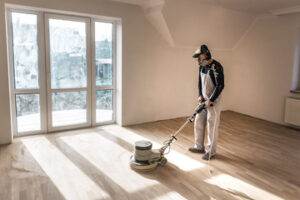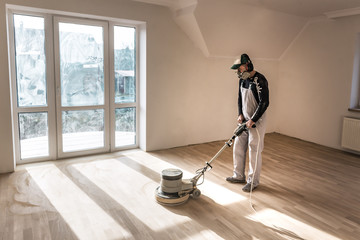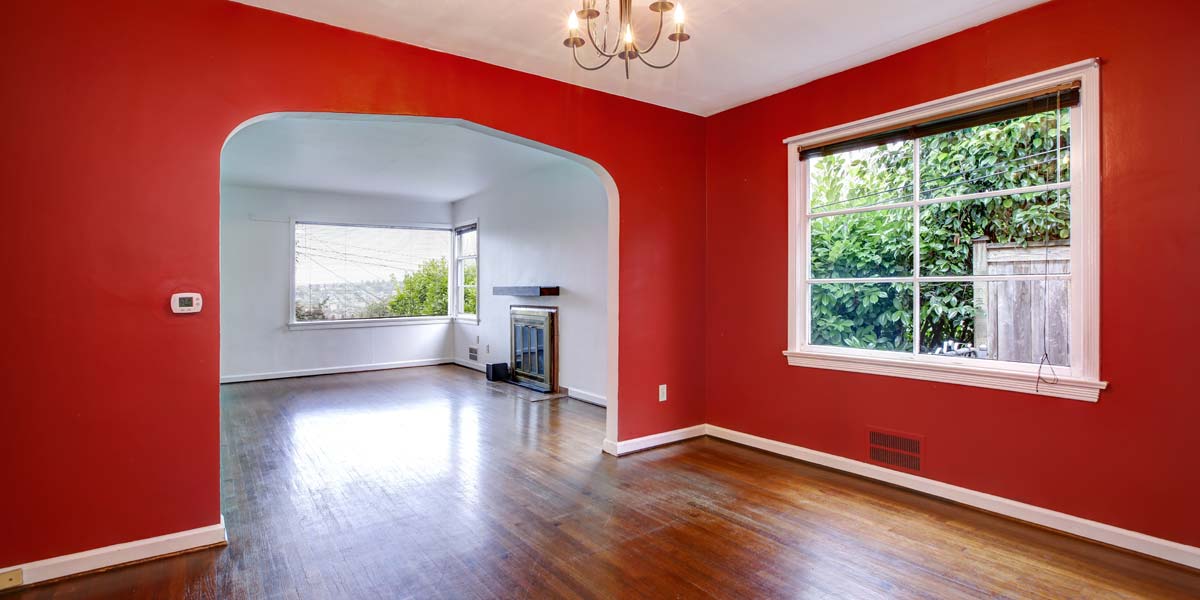There are many factors to consider before hiring a professional to do your hardwood floor sanding. This includes how much it costs, the type of sanding method you choose and whether you should screen or refinish the wood before it is sanded.
 Sanding hardwood floors can be a hassle. In addition to the cleanup, there is the problem of dust. Wood dust is carcinogenic and can trigger allergies and asthma. Fortunately, floor sanding has been developed to reduce the amount of dust drastically.
Sanding hardwood floors can be a hassle. In addition to the cleanup, there is the problem of dust. Wood dust is carcinogenic and can trigger allergies and asthma. Fortunately, floor sanding has been developed to reduce the amount of dust drastically.
However, there are two options: dustless sanding and traditional sanding. Depending on your budget, you can choose which option best suits your needs. Dustless sanding uses specialized equipment that removes the sanding dust. Typically, this involves attaching a vacuum suction to the sander. The vacuum is then connected to an outside containment system.
A dustless sanding system is much more efficient than traditional sanding. It takes less time to complete the job and requires less cleaning up. Unlike a sanding machine attached to a cloth bag, a dustless sander uses a high-powered vacuum that captures and contains most of the dust produced. Dusty sanding, on the other hand, produces more dust. Traditionally, sanding a hardwood floor produces a lot of dust and dust-related debris. Screening and refinishing your hardwood floor are two similar processes, but with a few differences. While screening is a less costly and cleaner way to refresh your hardwood floors, refinishing can be expensive and time-consuming.
Refinishing is the process of removing scratches and other damages from a hardwood floor. It can also be a great way to recolor a hardwood floor. You can choose to have your floors refinished by a professional or do it yourself. If you do it yourself, patch test first is a good idea. The process involves sanding a wooden floor in order to remove the existing finish. This should be done every 3-5 years. There are two types of finishes: water-based and oil-based. Water-based polyurethane takes a few days to dry, but oil-based polyurethane takes a little longer.
Using a special sanding screen, you can screen the surface of a wood floor. Unlike sanding, screening does not remove any layers of finish. In fact, it will scuff the floor more gently. Chatter marks are a rippling pattern of half circles that appears on hardwood floors. They appear in areas where sanding is not done properly. To prevent chatter marks from occurring, it is essential to follow a few tips. The first and most obvious tip is to make sure that your floor is dry before sanding. This is because wood absorbs moisture from the air. Moisture levels in your flooring should be at least 6 to 9 percent before sanding. It is best to measure the humidity with a moisture meter.
The second tip is to remove nails and staples from the floor before sanding. Nails in the floor can tear the sandpaper and gouge the sanding drum. You may also need to scrape the floor. If you want to sand your wood floors with a multi-disc sander, the best approach is to walk slowly, keeping the grain in your mind. Make sure to overlap the unit as you move from right to left.
The cost of sanding versus refinishing hardwood floors depends on the square footage and the type of materials used. It is possible to refinish your floor by yourself, but you will have to invest in additional supplies and equipment. While the cost of sanding may be less expensive than refinishing, the overall project is still significant. A professional can charge from $3 to $8 per square foot for refinishing. They will also charge based on the size of the room and the number of stairs. For smaller spaces, companies will usually charge higher rates.
Refinishing your wood floors can add value to your home. However, the process is costly and can take a lot of time. You should plan to do it once every ten years or so. In addition to sanding, refinishing your hardwood floors involves cleaning and repairing damaged areas. The finished surface will then be sealed with three coats of polyurethane. This provides an invisible layer of protection.


